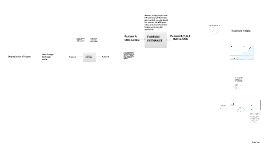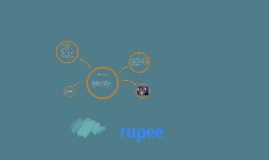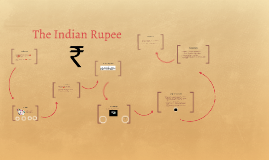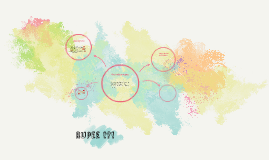Rupee
Transcript: Depreciation of Rupee How Foreign Exchange works IMPACT Person B Eurozone Crisis and expected recession created lack of trust in the market. Investors started buying US Dollars, the so called "Safe Haven". Study 1: Infosys High Import Costs Inflation Huge FII Losses Increase in Debt Burden Profits for Export and Services Industry Increasing cost of Oil CAUSES Current Crisis Thank You INR to USD Recommendations Markets fell around 25 % since the start of the year, but losses for overseas investors has been around 36 % due to rupee depreciation. Losses have been specially severe for investments in Oil and Import oriented companies. In this uncertainty, investors began selling Indian stocks, foreign currency began to pour out. FII's withdrew approx 500 million $ in the last week of November from Indian Markets. Money previously reaching India was now headed to other Emerging Markets like Brazil, Mexico. Lack of Reforms Tools with RBI Person A wants to convert his dollars to rupees Fortune 500 technology services company Major revenue: IT services and consulting clients in over 30 countries. 85% of revenues from abroad, with major inflow in US Dollars. Posted 33% increase in quarterly profits aided by falling rupee. Person A Oil Companies Timeline Person B wants to convert his rupees to dollars DECEMBER 15 Rupee hits record low of 54.30/$ DECEMBER 15 RBI decides to crack down on speculation by: Barring residents and foreign institutions from rebooking forward contacts Cutting overnight open positions banks keep. DECEMBER 16 The central bank acts to improve dollar supply by removing interest rate ceiling on NRI deposits DECEMBER 19 MFIs allowed to raise up to $10 million via ECBs through automatic route Global Economic Uncertainty Persistent Inflation Capital Outflow Trade Deficit Lack of Reforms FOREIGN EXCHANGE The government can take initiatives which encourage and increase the flow of foreign investments into India. Recent steps taken by the government allowing increase in the investment limit in government security and corporate bonds is in the right direction. Government can consider temporary import compression. Allow FDI in retail and aviation. Person A USD to INR Depreciating rupee makes import of crude oil expensive which directly leads to an increase in the operating expense of the companies, thereby decreasing profit margins. Stocks of the major oil companies have tanked by almost a third in the last six months of 2011 as they had to sell the petroleum products under the cost price. Study 2: Tata Steel Person B,C,D,E India is structurally an import intensive country. Due to high and persistent current deficits, the input costs will rise on account of rupee depreciation. It will particularly hit the Industrial sector and increase price of essential commodities, raw materials, oil, thereby increasing final product prices. Exactly opposite is the case for export and Services companies with major inflow in US Dollars. Depreciating rupee is not only impacting the import bill, it has also severely affected the cost of borrowings for the corporate sector. Indian companies have borrowed close to $29 billion in foreign currencies, through ECBs (External Commercial Borrowing) and FCCBs (Foreign Currency Convertible Bonds), since the beginning of 2011. FII losses Increase in Debt Burden Growth Prospects World's 10th largest steelmaker. Major Expenses: Raw materials, Energy. TATA Steel posted a quarterly loss of RS. 687 crores. Rupee depreciation being one of the reasons which lead to high input and raw material costs. Capital Outflow Using FOREX Reserves Easing capital control Encourage capital inflows Inflation and Trade Imports far in excess of exports, pressurized the rupee. Trade deficit figures were consistently around 10 billion $ for the past six months. Assume, many people have INR and they all want USD whereas just one guy wants the reverse. He will quote extra as demand for Dollar is high and dollar will appreciate. Very few reforms in the past years. The policies are getting increasingly populist. FDI in retail was proposed but not passed due to strong opposition. FDI in aviation, not passed yet. Trade Deficits Assume, many people have INR and they all want USD whereas just one guy wants the reverse. He will quote extra as demand for Dollar is high and dollar will appreciate. Exchange rate system was changed from fixed to floating as India faced high inflation, large government budget deficits and BOP crisis . By the end of 1999, the Indian Rupee was devalued considerably. In the period 2000–2007, the Rupee stopped declining and stabilized in the range between 1 USD = INR 44–48. In 2008 Rupee traded around 39 Rs to 1 US dollar , on sustained foreign investment flows into the country. Before the current crisis, rupee traded between 44-49. Rupee Dollar history since 1991 Inflation had been around 10% for the past two years. This being a persistent problem led to strong negative sentiments among the

















